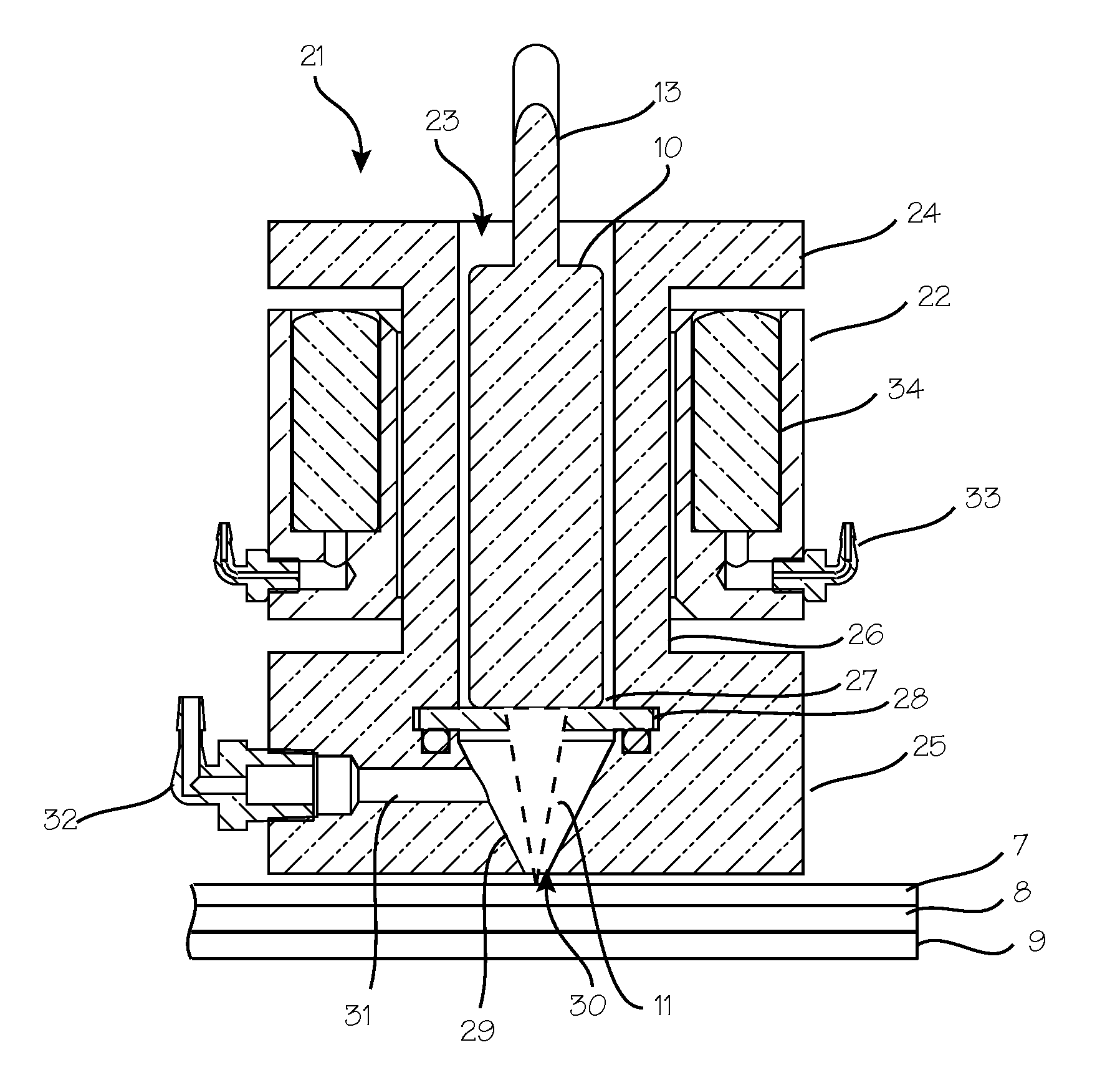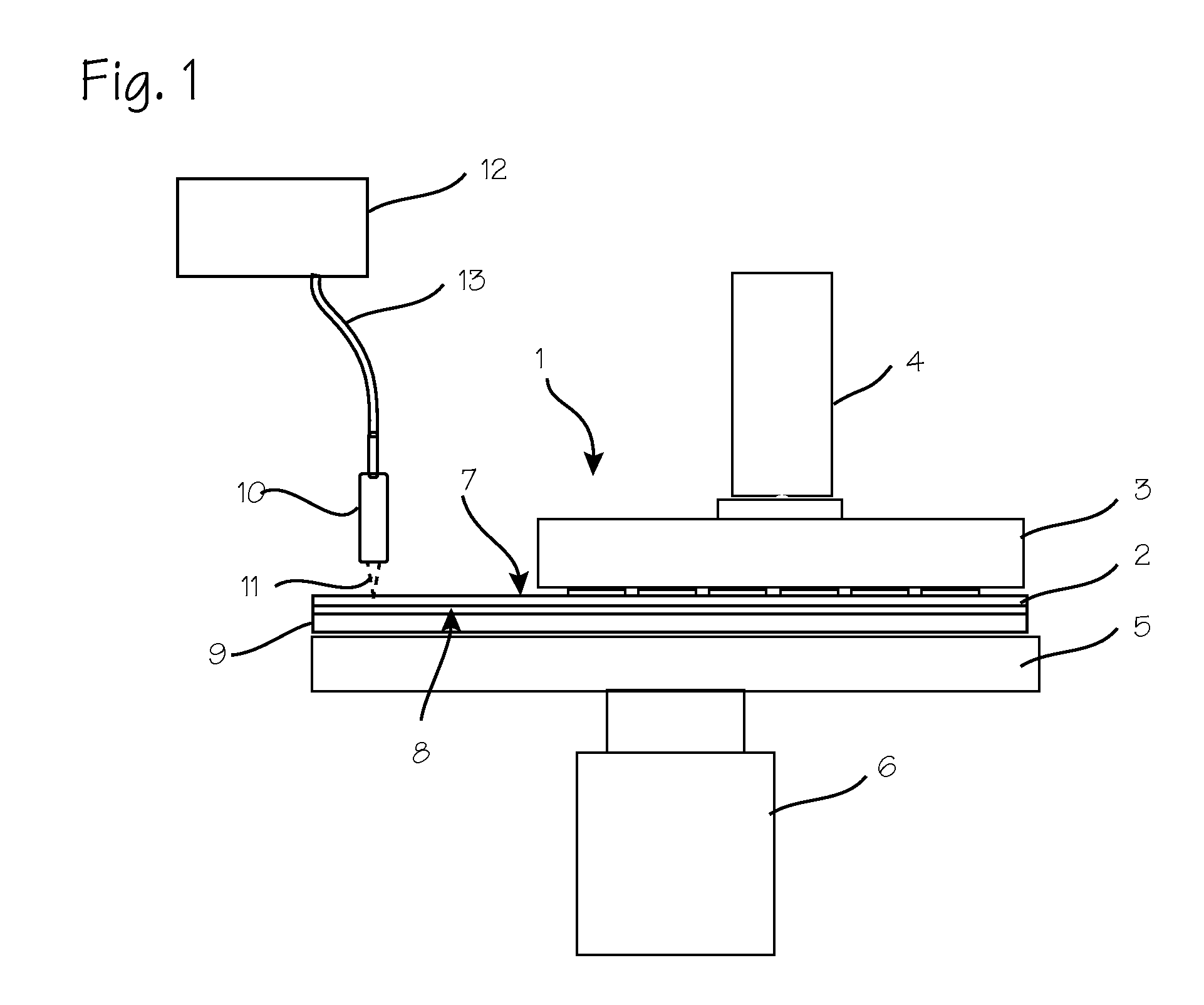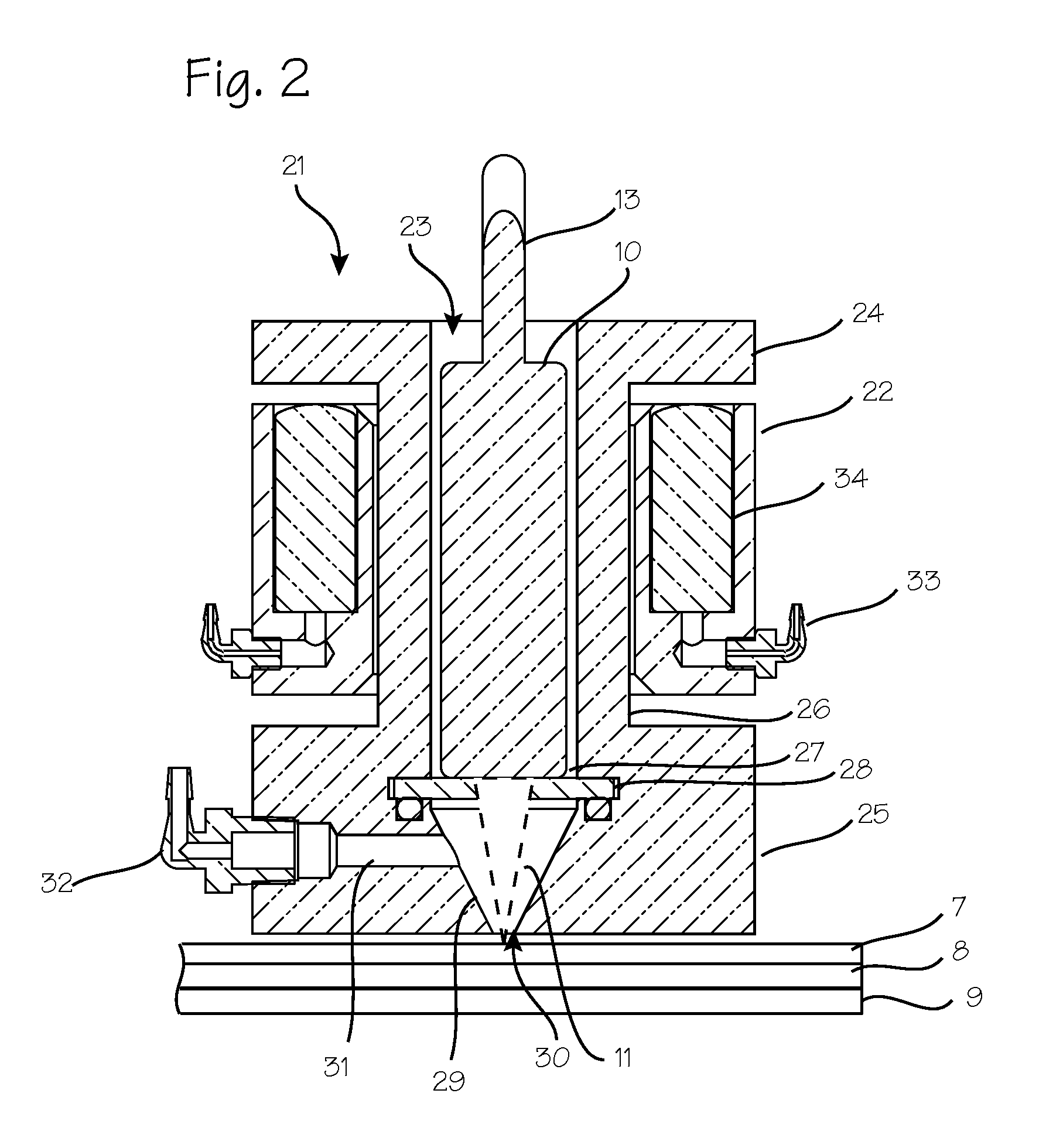System and Method for In Situ Monitoring of Top Wafer Thickness in a Stack of Wafers
a technology of in situ monitoring and stacking, which is applied in the direction of measuring devices, instruments, using optical means, etc., can solve the problems of erroneous top wafer thickness measurement of contact probes, blocking of light emitted by the probe, and inability to use contact probes with stacked wafers
- Summary
- Abstract
- Description
- Claims
- Application Information
AI Technical Summary
Benefits of technology
Problems solved by technology
Method used
Image
Examples
Embodiment Construction
[0010]FIG. 1 illustrates the grinding process and a conventional non-contact probe and wafer in a grinding system 1. A wafer 2 is disposed below a grinding wheel 3. The grinding wheel is supported and rotated by the grinding wheel spindle 4, and the wafer is supported by the wafer holder / chuck 5 which in turn is supported and rotated by the wafer-chuck spindle 6. The wafer being processed may be a stacked wafer which includes a processed wafer with a silicon base layer 7 (and numerous other layers 8 built up upon its “front side”) and a carrier wafer 9 under the processed wafer. During the grinding process, the optical probe system is operated to monitor the thickness of the silicon base layer of the top wafer as it is ground. The probe system includes probe body 10 which transmits light and receives reflected light through the probe light path 11. Light is typically transmitted from a remote light source 12, through optical conduit 13 (fiber optics or waveguide) and optical probe b...
PUM
 Login to View More
Login to View More Abstract
Description
Claims
Application Information
 Login to View More
Login to View More - R&D
- Intellectual Property
- Life Sciences
- Materials
- Tech Scout
- Unparalleled Data Quality
- Higher Quality Content
- 60% Fewer Hallucinations
Browse by: Latest US Patents, China's latest patents, Technical Efficacy Thesaurus, Application Domain, Technology Topic, Popular Technical Reports.
© 2025 PatSnap. All rights reserved.Legal|Privacy policy|Modern Slavery Act Transparency Statement|Sitemap|About US| Contact US: help@patsnap.com



